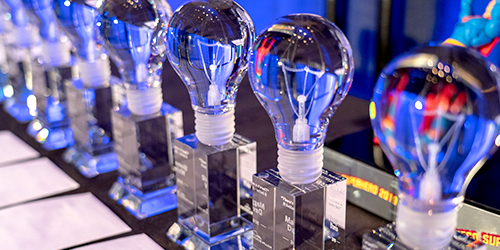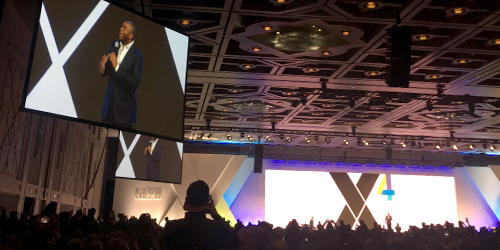Published On Apr 20, 2016
in Technology
Phillips Edison strongly believes that our people are our greatest asset and we invest heavily in giving them the resources that they need to continue to be the best of the best. We offer associates opportunities for learning and development through our internal professional enrichment program, PECO University, and we give them the most up-to-date tools and technology. Every associate that travels is given an iPad and all team members can access our information from anywhere at any time.
Last year we dedicated significant funds for software and hardware technology upgrades geared toward improving our team’s processes, effectiveness and capabilities. This included deployment of new software in a variety of departments and replacing most of our computers. Our CIO was even featured in Sync magazine outlining the many IT initiatives and advances Phillips Edison made in 2015. Sounds great, doesn’t it? Except, that even as we continue to implement technological improvements, we are realizing that not all of these new tools are being used to their fullest extent. We’re learning that giving people the tools is not enough – we must also help them understand those tools and integrate them into their daily work load.
Here’s what we’ve learned so far:
- Training. Our PECO University excels at offering opportunities for development in areas such as leadership, innovation and industry knowledge. However, as information technology changes, we need to adjust our program accordingly. Microsoft Word, Excel and Outlook programs are no longer sufficient and no matter how user friendly an iPad is, we can’t expect team members to use them to their full potential without guidance.
- Habit. People are creatures of habit. We find a way to do things that works and we stick to it. Implementing new technologies means breaking that habit, shaking up the routine and doing things differently. We must help our team and encourage them to make the effort to do things differently. It’s important to help them see how the new resource can integrate into their work to improve what they do and how they do it.
- Awareness. In a company with almost 300 people, communication can be a challenge. We do a lot of things to encourage communication, including town hall meetings, annual all-associate meetings, quarterly newsletters, regular news emails and an intranet. We share a lot of information regarding the company’s plans, direction and workings. We need to make sure that all associates are aware of the tools that we’ve put out there.
- Controls. We tend to throw new tools out there and make them available to everyone because we want the entire team to benefit. We’ve realized that there is a “testing period”. If, after training and time, associates are not using the tools, we have to reallocate those resources.
To maximize use of technology, we are devoting more time and effort into how we communicate and train on new technologies. We also are implementing a system that will analyze who is using (or not using) the tools. Communication, training and guidance will help the team understand the what, why and how of the technological investments we make. Internal controls will give us the ability to better allocate funds so that software and equipment is directed towards the team members that will utilize them.
Change is often difficult and new technologies demand a LOT of change in both how we do things and how we think about things. Phillips Edison takes great pride in giving its team the resources it needs to be the best in the business. We’re working on making change management part of our toolbox to better support our associates and maximize our investments in our people and our resources. New tools, new learning and new lessons learned. Change is our only constant.
Jeffrey Edison





